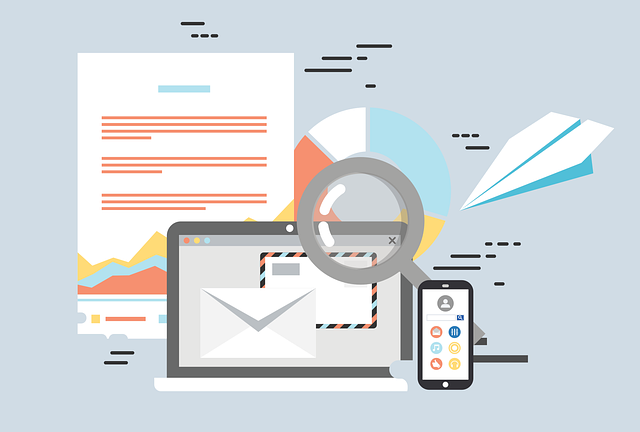Are you a creative professional looking to expand your reach and engage with your audience? In today’s digital age, email marketing and social media are two powerful tools at your disposal. But which one is better for you? Let’s explore the truth behind a theory that will help you make an informed decision.
Email marketing has long been hailed as the king of digital marketing, and for good reason. With an average ROI of $42 for every $1 spent, it’s a cost-effective way to reach your target audience directly. Email allows you to personalize and customize your messages, ensuring that each recipient feels valued and important.
On the other hand, social media platforms offer unparalleled reach and engagement. With billions of active users, these platforms provide an opportunity to connect with a wide audience and build a community around your brand. Social media also allows for real-time interactions and feedback, fostering a sense of authenticity and trust.
So, which one should you choose? The answer lies in understanding your target audience, goals, and budget. By analyzing the purpose, benefits, reach, engagement, personalization, customization, cost, and ROI of both email marketing and social media, you can make an informed decision that aligns with your creative professional goals.
And why settle for one when you can integrate both for maximum impact? Let’s dive in and explore the possibilities.
Key Takeaways
- Email marketing has a higher ROI compared to social media.
- Social media offers unparalleled reach and engagement with a large audience.
- Integrating both email marketing and social media strategies maximizes impact and fosters genuine engagement.
- Cross-promoting social media channels in email campaigns increases brand visibility.
Understand the Purpose and Benefits of Email Marketing
Email marketing is a powerful tool that allows creative professionals to connect directly with their audience and build stronger relationships. With its numerous benefits and effectiveness, email marketing can help you reach your target audience more effectively compared to social media.
One of the key advantages of email marketing is its ability to target and segment your audience. By collecting email addresses and using tools to segment your subscribers based on their interests and preferences, you can tailor your content and offers to specific groups, increasing the chances of engagement and conversion.
Furthermore, email marketing provides valuable data and analytics, allowing you to measure the success of your campaigns and make data-driven decisions for future strategies.
As you evaluate the reach and engagement of social media platforms, it’s important to consider the unique advantages that email marketing brings to the table.
Evaluate the Reach and Engagement of Social Media Platforms
When it comes to reaching and engaging your audience, envision yourself exploring the vast landscape of social media platforms. These platforms have become the go-to channels for businesses and creative professionals alike.
However, it’s important to understand that not all social media platforms are created equal. Each platform has its own unique algorithms that determine how content is displayed and who sees it. Understanding these algorithms is crucial in order to maximize your reach and engagement.
Additionally, social media platforms offer the opportunity for influencer marketing, where you can collaborate with influential individuals to promote your work to their followers. By leveraging social media algorithms and influencer marketing, you can effectively connect with your target audience and achieve your goals.
Transitioning into the next section, let’s now determine your target audience and goals.
Determine Your Target Audience and Goals
Imagine diving into the world of social media platforms and discovering the key to connecting with your target audience and achieving your goals.
To effectively navigate this realm, it’s crucial to define your audience demographics and set measurable goals. By understanding who your audience is, you can tailor your content and messaging to resonate with them on a deeper level. Identify their age, gender, location, interests, and online behavior to create a comprehensive picture of your target audience.
Additionally, clearly define your goals and objectives, such as increasing brand awareness, driving website traffic, or generating leads. These measurable goals will help you track your progress and determine the success of your social media efforts.
By combining audience insights with measurable goals, you can strategically craft your social media strategy for optimal results. As you consider the personalization and customization options, remember that these factors play a vital role in maximizing your social media impact.
Consider the Personalization and Customization Options
To truly captivate your target audience and achieve your goals, it’s essential to explore the endless possibilities of personalization and customization on social media platforms.
Personalization benefits are immense, as they allow you to tailor your content to individual preferences and interests. By leveraging user data, you can create highly targeted campaigns that resonate with your audience on a personal level.
Customization techniques further enhance the effectiveness of your messaging. From creating unique visuals to crafting personalized messages, you can create a memorable experience for your audience.
Additionally, social media platforms offer various tools and features that enable you to customize your content and engage with your audience in innovative ways.
As you dive into analyzing the cost and return on investment, you’ll discover how personalization and customization contribute to improved customer engagement and conversion rates.
Analyze the Cost and Return on Investment
By analyzing the cost and return on investment, you can witness the significant impact that personalization and customization have on customer engagement and conversion rates.
When it comes to cost effectiveness, email marketing takes the lead. With social media, you often need to invest in paid advertisements to reach a wider audience, while email marketing allows you to connect directly with your subscribers at a fraction of the cost. Additionally, email marketing provides valuable metrics that help in measuring success, such as open rates, click-through rates, and conversions. These insights enable you to optimize your campaigns and achieve better results over time.
However, social media has its own advantages, such as the ability to reach a larger audience and engage with followers in a more interactive way.
To maximize your impact as a creative professional, it is essential to integrate both email marketing and social media strategies. This allows you to leverage the strengths of each platform and create a holistic approach that drives engagement and conversions.
Integrate Email Marketing and Social Media for Maximum Impact
Connect with your audience on a deeper level by seamlessly merging your email and social media strategies, maximizing your impact and fostering genuine engagement.
Integrating email marketing and social media can be a powerful combination for creative professionals, allowing you to reach a wider audience and maximize results. By incorporating effective strategies, such as cross-promoting your social media channels in your email campaigns and vice versa, you can increase brand visibility and attract new followers.
Utilize the power of social media to drive traffic to your website or landing page, where visitors can sign up for your email list. In turn, use email marketing to nurture those leads and build stronger relationships with your audience.
Remember to track and analyze your data to understand what tactics are working best, so you can continually refine and improve your approach.
Frequently Asked Questions
What are some common email marketing mistakes to avoid?
One interesting statistic to consider is that 59% of marketers say email is their biggest source of ROI.
To ensure success with email marketing, it’s crucial to follow best practices. Avoid common mistakes such as sending emails without permission, using generic subject lines, or neglecting to optimize for mobile.
By implementing these practices, you can maximize the effectiveness of your email campaigns and drive better results for your creative business.
How can I measure the success of my social media campaigns?
To measure the success of your social media campaigns, focus on measuring engagement and analyzing audience demographics. Look at metrics like likes, comments, shares, and click-through rates to gauge the level of engagement your content is generating.
Additionally, use social media analytics tools to gain insights into your audience’s demographics, such as age, gender, location, and interests. By tracking these data points, you can make data-driven decisions to optimize your campaigns and effectively reach your target audience.
Are there any specific industries that benefit more from email marketing over social media?
In certain industries, email marketing can offer unique advantages over social media. For instance, the financial services sector heavily relies on email campaigns to reach and engage with their target audience.
Email marketing provides a more personalized and direct approach, making it ideal for industries that require a higher level of confidentiality or deal with sensitive information.
Furthermore, email allows for better tracking and analysis of campaign success, providing valuable data for strategic decision-making.
What are some effective ways to personalize emails for better engagement?
To increase email open rates and engagement, it’s important to use effective email personalization techniques.
Start by addressing recipients by their first name to create a sense of familiarity.
Tailor the content based on their preferences and past interactions, using dynamic content and segmentation.
Use compelling subject lines that create curiosity and urgency.
Incorporate personalized recommendations and offers to make the email more relevant.
By implementing these strategies, you can significantly improve engagement and ultimately drive better results from your email marketing campaigns.
How can I track the return on investment (ROI) of my email marketing efforts?
To track the ROI of your email marketing efforts, you need to take a data-driven approach.
Start by setting specific goals for your campaigns, whether it’s driving sales, increasing website traffic, or growing your subscriber list.
Then, use tracking tools like Google Analytics or email marketing software to monitor the performance of your campaigns.
Analyze metrics such as open rates, click-through rates, and conversions to identify areas for optimization.
By continuously testing and refining your email campaigns, you can maximize your ROI and achieve better results.
Conclusion
Congratulations! You’ve now explored the battle between email marketing and social media for creative professionals. By analyzing the purpose, reach, and engagement, target audience and goals, personalization options, and cost and return on investment, you’ve gained valuable insight.
But the key to maximum impact lies in integration. Combine the power of email marketing and social media to skyrocket your success. So, don’t delay, start integrating today and watch your creative career blossom!









